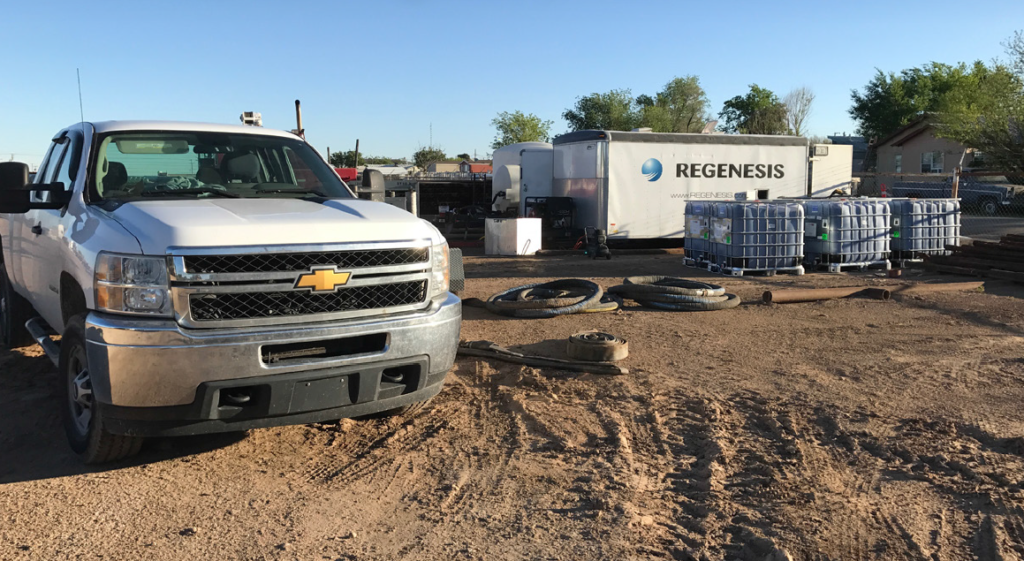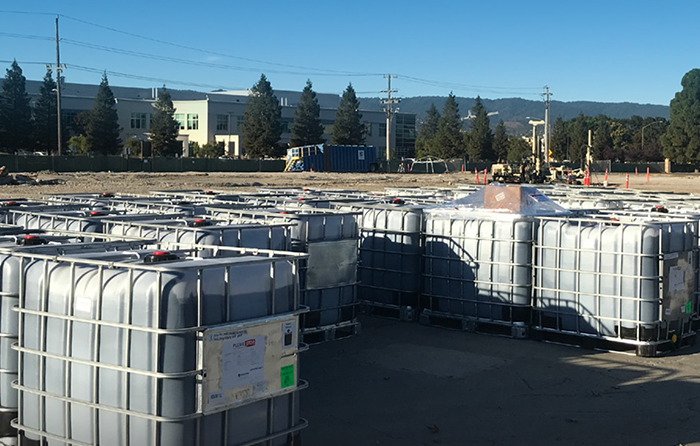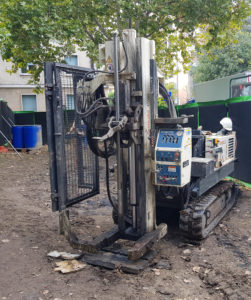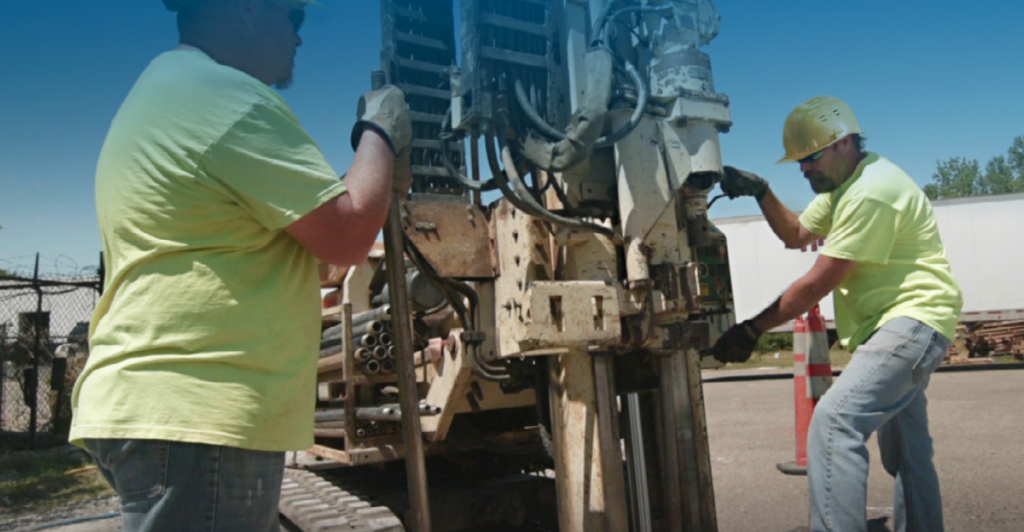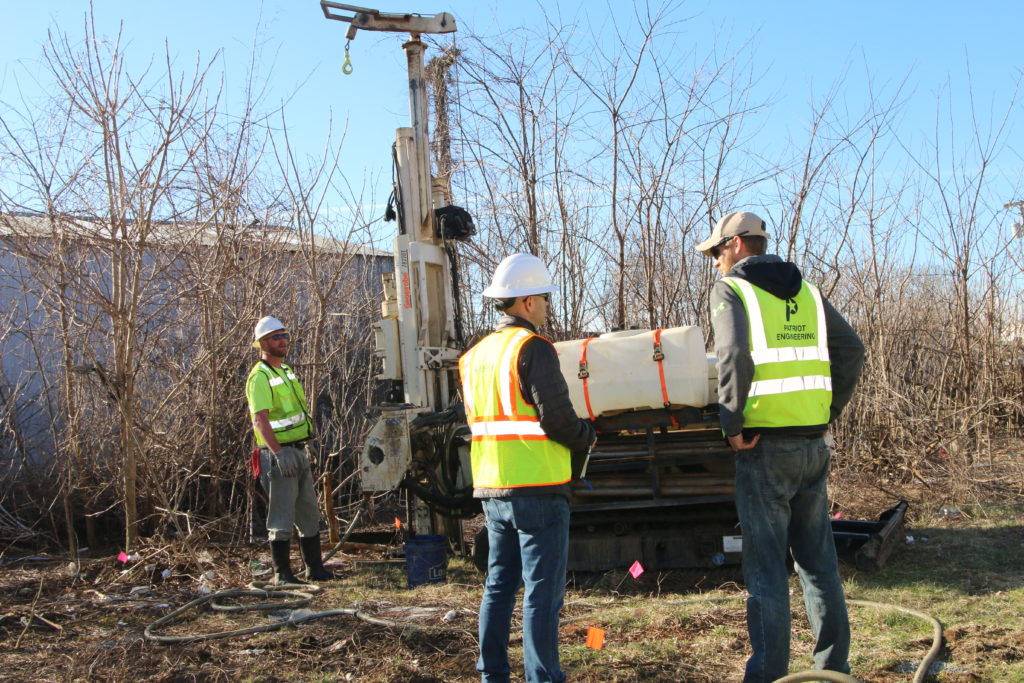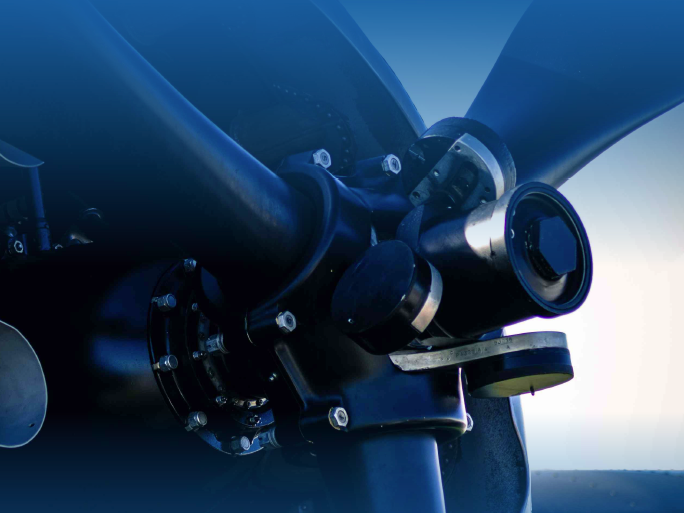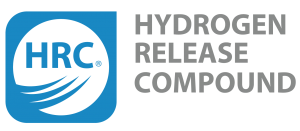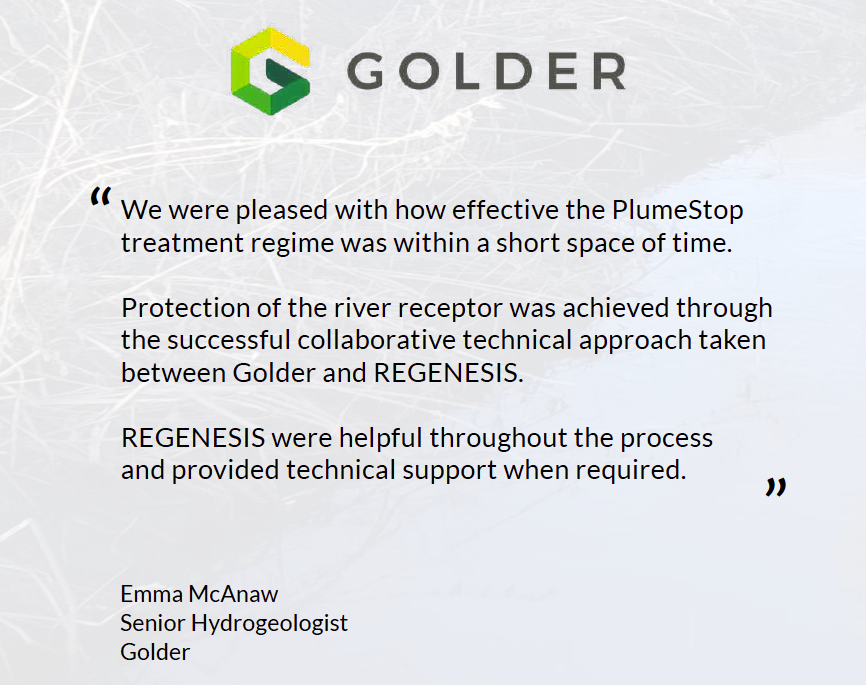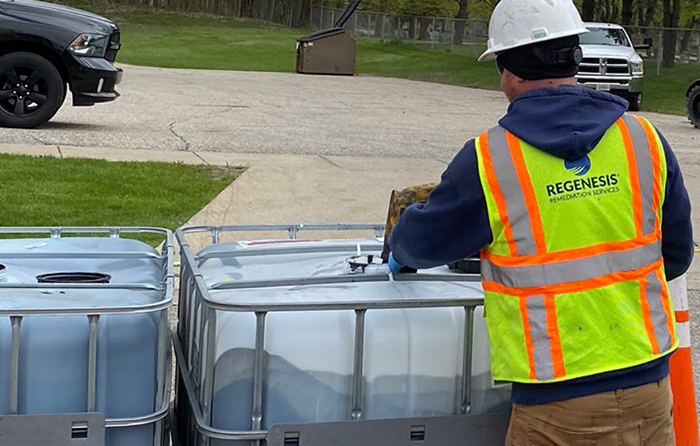PlumeStop Barrier Protects Drinking Water Supply Wells
This case study reviews a former chemical manufacturing facility in Texas where PlumeStop® Colloidal Activated Carbon was used in a permeable reactive barrier (PRB) to halt the movement of chlorinated solvents in groundwater. EA Engineering, Science, and Technology, Inc., PBC, a leading multi-disciplinary environmental and engineering consulting firm, contracted REGENESIS to implement the solution. PlumeStop was to be applied as part of an in situ bioremediation PRB near the distal end of the plume to promote sorption-enhanced natural attenuation of the contaminants.

Case study highlights:
- Innovative remedial approach addresses large PCE plume at a bedrock site under the CERCLA-Regulatory Framework
- Substrates successfully addressed contaminants in the Ogallala Sandstone
- PlumeStop PRB successfully cut off PCE and chlorinated solvent daughter products and prevented further movement downgradient toward private water supply wells
9m 46s reading time
DNAPL to Non-Detect: 6 Orders of magnitude reduction of chlorinated solvents
Combined in situ sorption and biological degradation leads to site closure of large manufacturing site in Northern Italy
Chlorinated solvents were used for many years at a former manufacturing facility in Northern Italy. This resulted in contamination of the groundwater underlying a large proportion of this 60,000 m2 site. Groundwater concentrations of up to 155,000 μg/L TCE meant there was a suspected presence of Dense Non Aqueous Phase Liquid (DNAPL) on parts of the site. The contamination posed an unacceptable risk to both on- and off-site receptors and it was determined that active remediation was required on a large proportion of the site.
Remediation Strategy:
REGENESIS created a strategy comprising Enhanced Reductive Dechlorination (ERD) tailored to contaminant concentrations and local geology, across the entire impacted area. This strategy was coupled with an injectable Permeable Reactive Barrier (i-PRB) at the site boundaries. This in situ remediation approach proved to be successful, leading the site to closure after having reached stably very stringent concentrations (VC<0.5 μg/l; TCE<1.5 μg/l) and obtaining up to 6 orders of magnitude reduction in concentrations.
Suite of REGENESIS products applied for ERD: 3-D Microemulsion®, HRC®, HRC-X®, HRC Primer®.
Injectable Permeable Reactive Barrier : PlumeStop®Liquid Activated Carbon™ (CAC)
6m 30s reading time
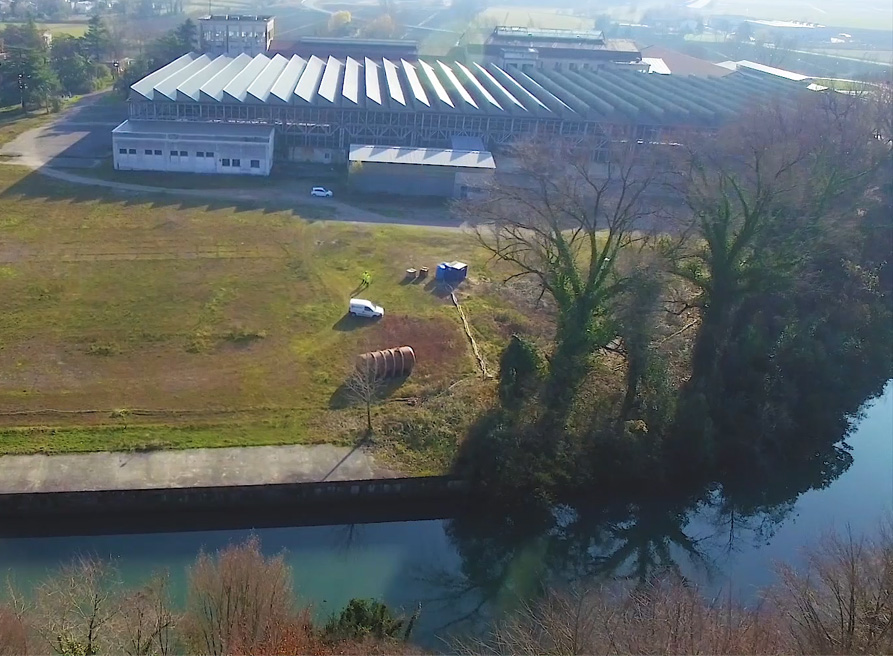
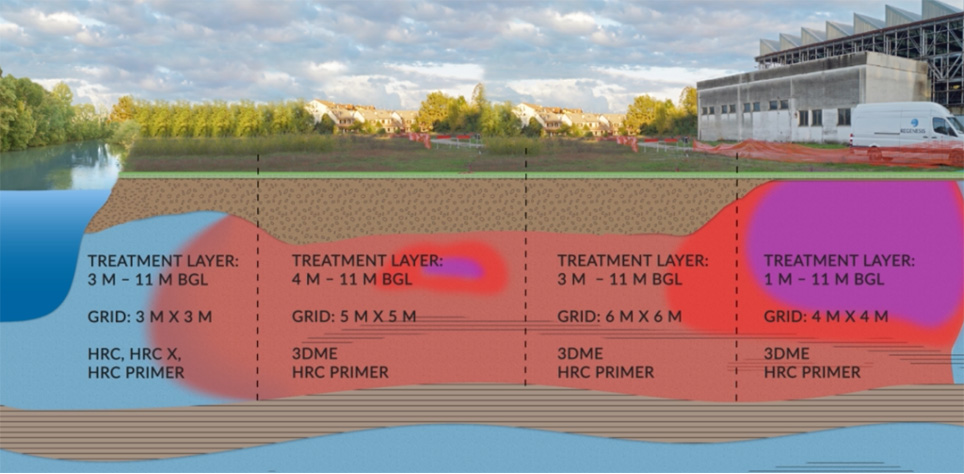
PlumeStop and S-MicroZVI Application Paves The Way For Redevelopment
Case study highlights
This case study reviews a contaminated chlorinated solvent site in northern California, USA, where advanced design verification testing and predictive modeling methods were used to guide a remarkably successful in-situ remediation effort:
-
Highly successful remediation solution using colloidal technologies: PlumeStop and S-MicroZVI
-
Complete reduction of PCE, TCE and daughter products in the treatment areas
-
Flux-based predictive modeling used to optimise remediation to meet two-year timeline
-
Remedial objectives achieved allowed redevelopment of the property

Combined ISCR and in situ sorption of a PCE plume on school grounds in Northern Italy
An ongoing manufacturing facility located within a major Italian city created a widespread tetrachloroethene (PCE) contaminant plume in the underlying aquifer. The highly aerobic aquifer has inhibited natural attenuation, with no daughter products detected even after many years.
Environmental company TAUW is in charge of this site and has implemented hydraulic containment within the factory grounds, as required by law. However, there remained a need to target the plume beyond the site boundary, for which they outlined an in situ solution in collaboration with Prof. Marco Petrangeli Papini from Università La Sapienza di Roma.
Case study highlights:
- Safe and easy co-injection of PlumeStop and S-MicroZVI
- 50m long in situ barrier was applied with minimal interference with the school activities
- Significant and rapid decrease of PCE concentrations in all 3 monitoring wells immediately downgradient
4m 47s reading time
Site Goals Met Within 60 Days
Case study highlights:
This case study reviews the confidential site of a large-scale in situ groundwater treatment of trichloroethene (TCE) at a former industrial manufacturing facility with challenging project objectives and an agressive remediation timeline.
-
TCE eliminated within 60 days post-application
-
This reduction has been continuously maintained more than 5 years to date.
-
The highly controlled PlumeStop injection resulted in no ‘day lighting’ or ‘surfacing’ inside the building.
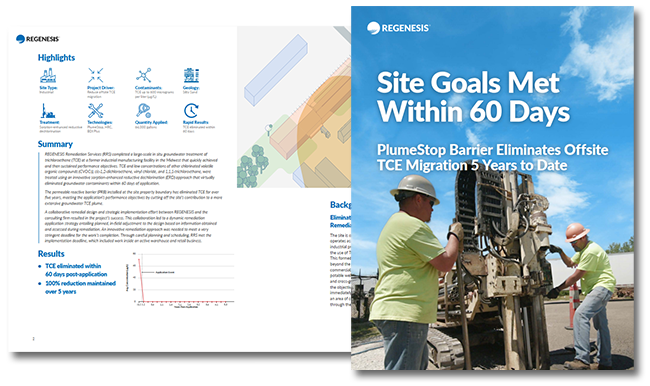
A collaborative remedial design and strategic implementation effort between REGENESIS and the consulting firm resulted in the project’s success. This collaboration led to a dynamic remediation application strategy entailing planned, in-field adjustment to the design based on information obtained and assessed during remediation. An innovative remediation approach was needed to meet a very stringent deadline for the work’s completion. Through careful planning and scheduling, RRS met the implementation deadline, which included work inside an active warehouse and retail business.
TCE and low concentrations of other chlorinated volatile organic compounds (CVOCs), cis-1,2-dichloroethene, vinyl chloride, and 1,1,1-trichloroethane, were treated using an innovative sorption-enhanced reductive dechlorination (ERD) approach that virtually eliminated groundwater contaminants within 60 days of application. The permeable reactive barrier (PRB) installed at the site property boundary has eliminated TCE for over five years, meeting the application’s performance objectives by cutting off the site’s contribution to a more extensive groundwater TCE plume.
Over 8 Million Cubic Feet of Groundwater Treated In 13 Days
This case study reviews the site of a large-scale enhanced reductive dechlorination (ERD) treatment of chlorinated volatile organic compounds (CVOCs) applied in a fractured bedrock aquifer at a voluntary remediation site in Pennsylvania. REGENESIS Remediation Services (RRS) began the application in May 2020 and completed it in less than 13 days, averaging nearly 7,000 gallons of fluid volume injected per day at this active facility. In total, more than 260,000 combined pounds of 3-D Microemulsion, Chemical Reducing Solution (CRS) and Bio-Dechlor INOCULUM Plus (BDI Plus) were injected for ERD treatment of the CVOCs. The extensive injection well network and large injection volume required RRS to develop an innovative injection process and containment design. Two 21,000-gallon frac tanks were delivered to the site to hold deoxygenated water used for mixing and to chase product injections. Mixing for the main high-flow system was performed in two large polyethylene tanks that were constantly recirculated to ensure a homogenous mixture.
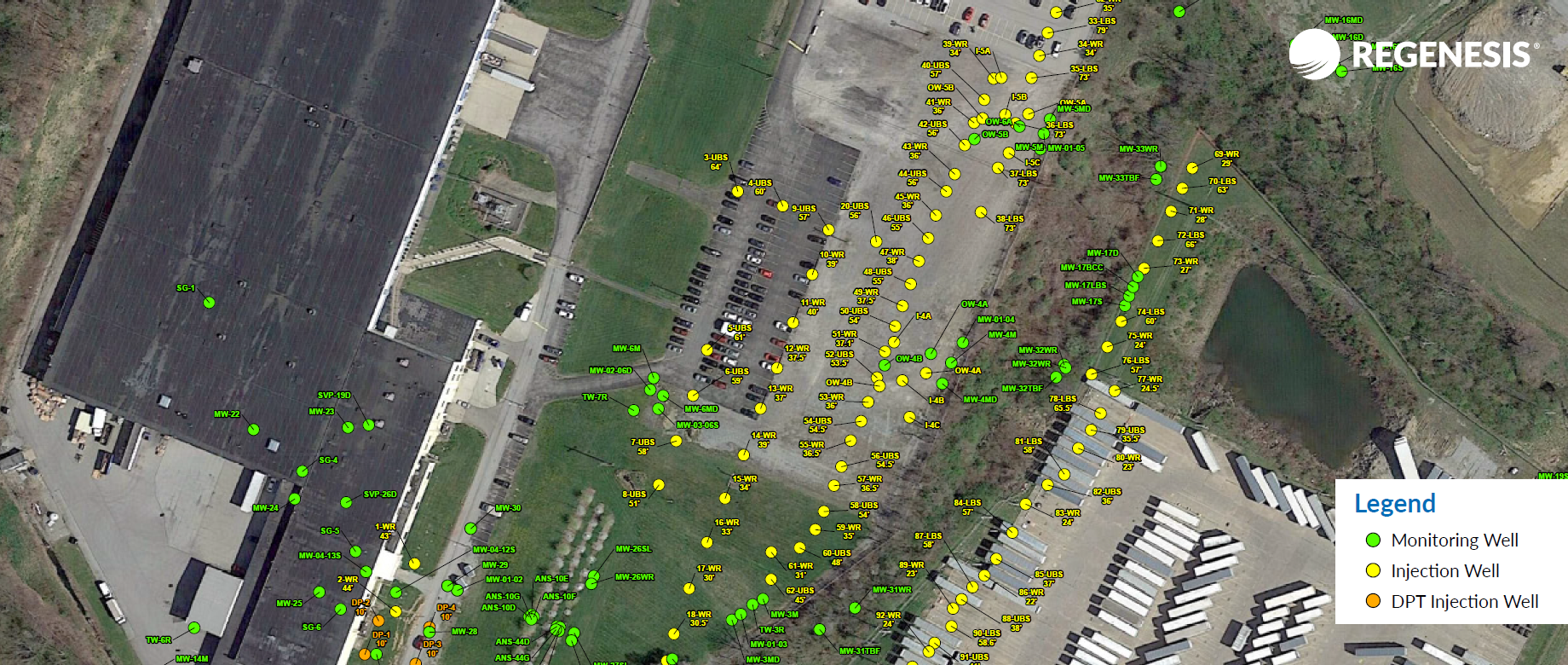
Case study highlights:
- 8 million cubic feet of CVOC impacted groundwater treated
- 88,000 gallons of ERD remedial amendments applied in less than 13 days using novel, innovative tooling and application approach
- The project was completed more than 40% faster than originally scheduled.
7m 30s reading time
PetroFix Pilot Study Leads To Successful Full-Scale Application
This case study reviews a full-scale PetroFix remediation program that was designed and implemented at seven locations to treat petroleum hydrocarbons (PHCs) following a successful field pilot test.
Two post-injection groundwater sampling events were completed in June and September 2019. In December 2019, a supplemental PetroFix injection was completed in the PHC source area onsite following the PersulfOx and ORC-A pretreatment step and groundwater equilibration. Additionally, a new treatment area was added where a small quantity of PetroFix was injected.
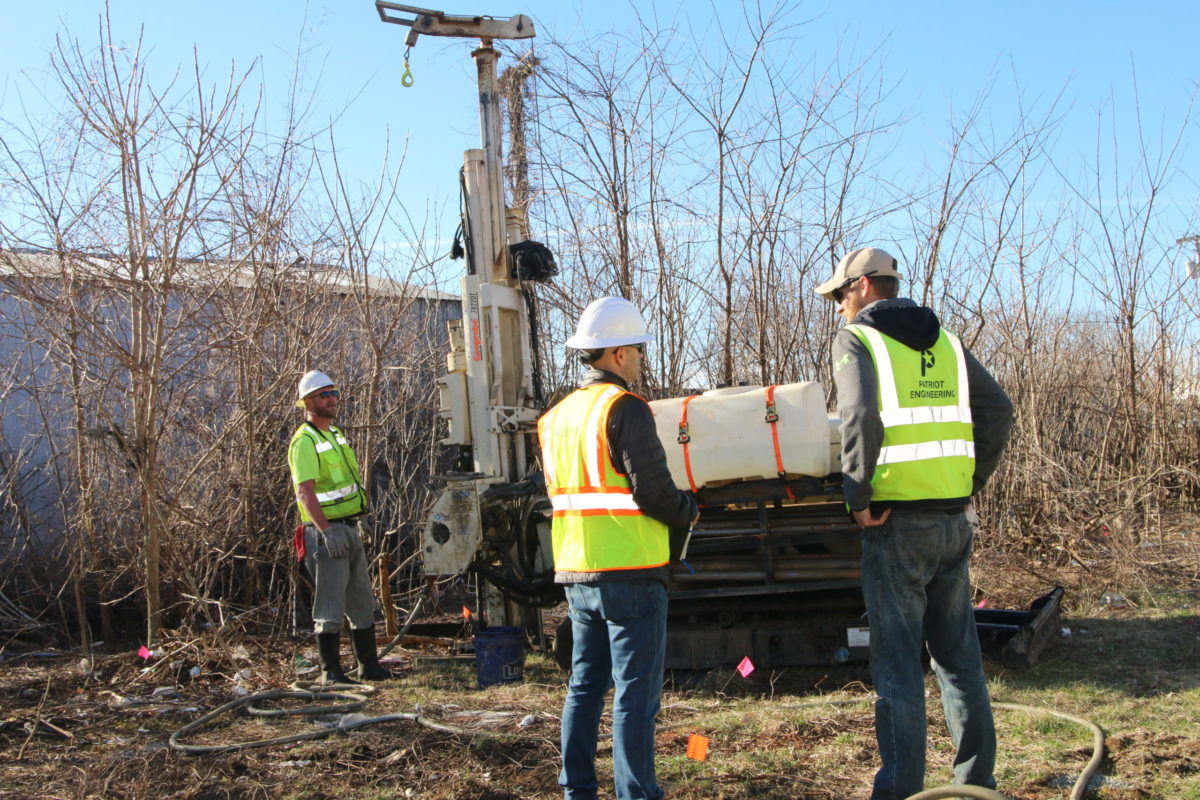
Case study highlights:
- Previous pilot testing results provided promising results leading to a full-scale application
- PetroFix is designed to remediate petroleum contamination completely at the lowest total cost to closure
- Site closure strategy included reducing groundwater concentrations, inhibiting plume migration, and demonstrating plume stability site-wide
7m 54s reading time
Multiple Lines of Evidence Show CVOCs Degrading on PlumeStop, Leading Site to NFA Status
This case study reviews one of the original PlumeStop® pilot tests for in situ groundwater treatment of chlorinated volatile organic compounds (CVOCs or chlorinated solvents) at a former dry cleaner location in Marina, California. REGENESIS treated the CVOCs using a novel, sorption-enhanced reductive dechlorination (ERD) approach. This approach consisted of immediate sorption followed by the sequential elimination of chlorine from the CVOC molecules, transforming them into non-toxic end products such as ethene, carbon dioxide, and chloride.
Case study highlights:
- Combined remedy approach proves successful in treating chlorinated solvents at former dry cleaner
- This site provided ideal challenge conditions to demonstrate complete biodegradation using a sorption-ERD approach
- The site was granted NFA status in June 2019 as a result of this pilot study
9m 31s reading time

PlumeStop Treatment of Chlorinated Solvents in a Bedrock
Successful pilot study uses colloidal activated carbon to protect
nearby surface waters, United Kingdom
Introduction
REGENESIS was asked to provide a remediation solution for a Trichloroethylene (TCE) plume in the UK. We worked closely with Golder to design and implement a novel solution that combined Plumestop, HRC and BDI+ to sorb and biologically degrade the contamination, rapidly and effectively reducing contamination downstream to nondetectable
levels.
Case Study Highlights
This pilot study shows that treatment of chlorinated solvent plumes is possible using PlumeStop even with challenging conditions such as a: co-mingled plume, fractured bedrock setting, and a highly variable hydraulic conductivity.
The PlumeStop in situ permeable reactive barrier rapidly reduced downgradient contaminant concentrations and maintained these through a combination of sorption and biological degradation,protecting the adjacent surface water receptor.
3m 50s reading time
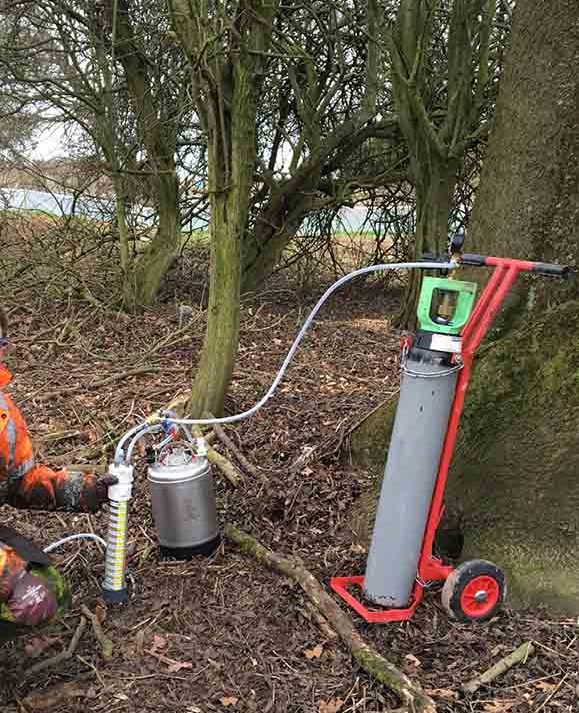
Colloidal Activated Carbon Barrier Protects Neighborhood from Chlorinated Solvent Plume
This case study reviews a field-scale pilot test for in situ groundwater treatment of chlorinated volatile organic compounds (CVOCs) at high concentrations, in a fast-moving, aerobic aquifer beneath a residential neighborhood. The CVOCs were treated using a unique combination of remediation technologies, symbiotically promoting sorption-enhanced reductive dechlorination (ERD) via biotic and abiotic processes. Hamp, Mathews & Associates, Inc., a leading environmental consultant, enlisted REGENESIS to design and install an in situ PRB to fully treat the tetrachloroethene (PCE), trichloroethene (TCE), cis-1,2-DCE (cis-DCE), and vinyl chloride, converting them into nontoxic end products such as ethene, ethane, carbon dioxide, and chloride.
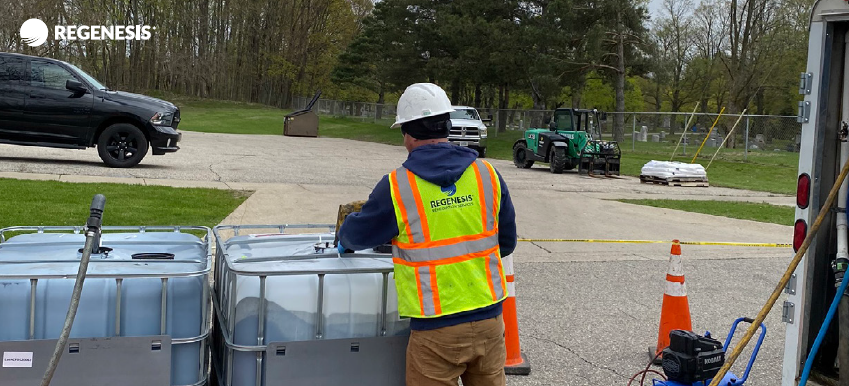
Case study highlights:
- A combined remedy approach using activated carbon and zero valent iron reduces risk of exposure to a residential neighborhood
- PlumeStop permeable reactive barrier (PRB) demonstrated effective in eliminating contaminants in an extreme contaminant flaux aenvironment
- Soil cores and groundwater samples confirmed consistent PlumeStop distribution in the in situ PRB
11m 59s reading time

 Americas
Americas Europe
Europe Français
Français Deutsch
Deutsch Italiano
Italiano Español
Español